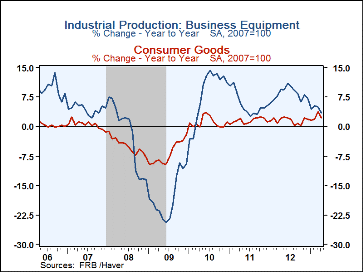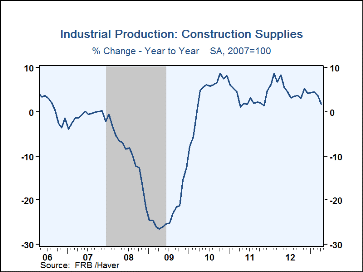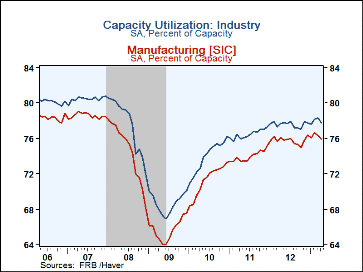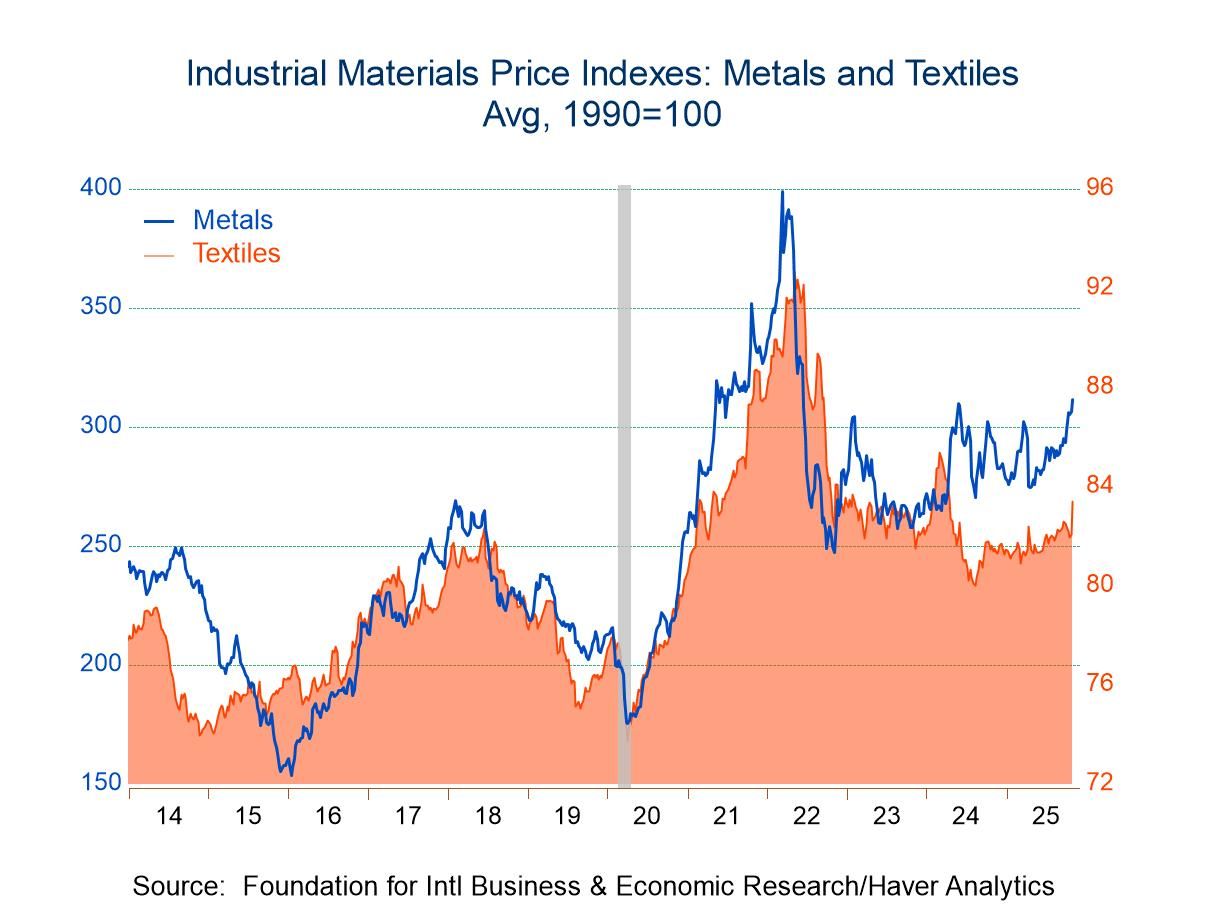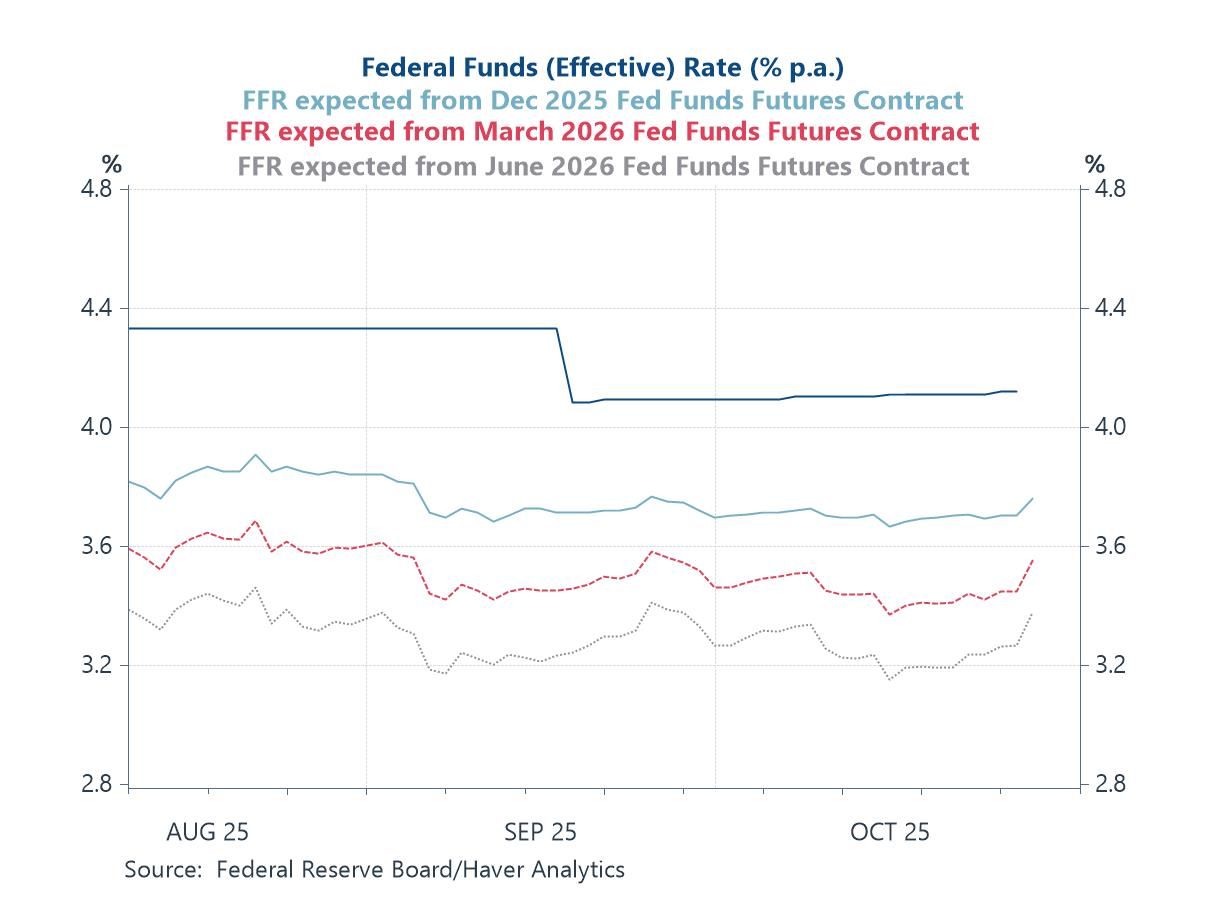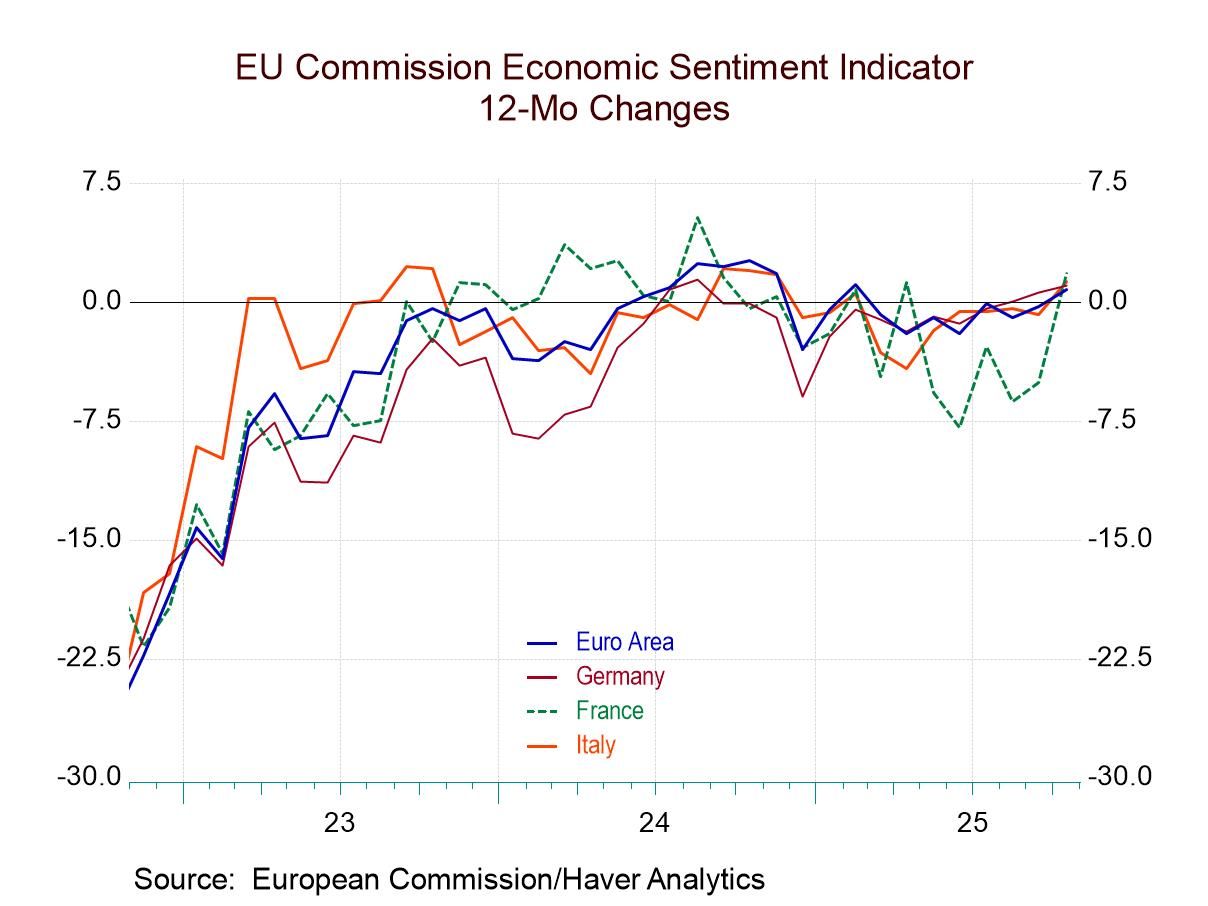 Global| May 15 2013
Global| May 15 2013U.S. Industrial Production Moves Lower
by:Tom Moeller
|in:Economy in Brief
Summary
Activity in the factory sector is weakening. Industrial production fell 0.6% during April following a 0.3% March increase, earlier reported as 0.4%. A 0.1% slip had been expected in the Action Economics survey. Declines in activity [...]
Activity in the factory sector is weakening. Industrial production fell 0.6% during April following a 0.3% March increase, earlier reported as 0.4%. A 0.1% slip had been expected in the Action Economics survey. Declines in activity were broad-based amongst industries last month. Factory sector production fell 0.4% (+1.4% y/y) following its unrevised 0.2% March slip. Utility output reversed course and fell 3.7% (+3.4% y/y) following a 6.4% March owing to warmer-than-normal temperatures.
The drop in factory sector output reflected across-the-board industry weakness. Consumer goods production fell 0.6% (+2.3% y/y) as motor vehicle output dropped 1.2% (+5.2% y/y). Elsewhere, appliance, furniture & related goods production fell 0.8% and was unchanged y/y. In the nondurables area, apparel output fell 1.6% (-2.9% y/y) while paper production dropped 0.6% (-1.9% y/y). For business equipment, output fell 0.5% (+3.5% y/y). Output of information processing and related equipment fell 0.5% (+3.2% y/y) and transit equipment production fell 0.5% (+5.9% y/y). Excluding the output of high tech products & motor vehicles, production fell 0.5% (+1.8% y/y) during April.
The capacity utilization rate fell to 77.8% from a downwardly revised 78.3% in March. In the factory sector, the rate fell to 75.9%. Overall industry capacity rose 1.8% y/y while factory sector capacity increased 1.6% y/y. Industrial production and capacity data are included in Haver's USECON database, with additional detail in the IP database. The expectations figure is in the AS1REPNA database.
| Industrial Production (SA, % Change) | Apr | Mar | Feb | Apr Y/Y | 2012 | 2011 | 2010 |
|---|---|---|---|---|---|---|---|
| Total Output | -0.6 | 0.3 | 0.9 | 1.9 | 3.9 | 4.1 | 5.4 |
| Manufacturing | -0.4 | -0.2 | 0.7 | 1.4 | 3.9 | 3.4 | 6.1 |
| Consumer Goods | -0.6 | 1.0 | 0.8 | 2.3 | 1.6 | 1.5 | 1.1 |
| Business Equipment | -0.5 | 0.1 | 1.8 | 3.5 | 8.3 | 5.6 | 8.3 |
| Construction Supplies | -0.7 | -1.5 | 2.2 | 1.8 | 5.2 | 3.0 | 3.6 |
| Materials | -0.4 | 0.1 | 0.9 | 1.9 | 4.1 | 4.7 | 8.8 |
| Utilities | -3.7 | 6.4 | 1.0 | 3.4 | -2.1 | -0.2 | 3.6 |
| Capacity Utilization (%) | 77.8 | 78.3 | 78.2 | 77.7 | 77.6 | 76.5 | 74.0 |
| Manufacturing | 75.9 | 76.3 | 76.6 | 76.1 | 75.8 | 74.0 | 71.3 |
Tom Moeller
AuthorMore in Author Profile »Prior to joining Haver Analytics in 2000, Mr. Moeller worked as the Economist at Chancellor Capital Management from 1985 to 1999. There, he developed comprehensive economic forecasts and interpreted economic data for equity and fixed income portfolio managers. Also at Chancellor, Mr. Moeller worked as an equity analyst and was responsible for researching and rating companies in the economically sensitive automobile and housing industries for investment in Chancellor’s equity portfolio. Prior to joining Chancellor, Mr. Moeller was an Economist at Citibank from 1979 to 1984. He also analyzed pricing behavior in the metals industry for the Council on Wage and Price Stability in Washington, D.C. In 1999, Mr. Moeller received the award for most accurate forecast from the Forecasters' Club of New York. From 1990 to 1992 he was President of the New York Association for Business Economists. Mr. Moeller earned an M.B.A. in Finance from Fordham University, where he graduated in 1987. He holds a Bachelor of Arts in Economics from George Washington University.



